10 Iconic Japanese Gods

Japan’s Shinto tradition is strongly tied to nature, with a firmly rooted belief that kami, or gods, are almost everywhere. The introduction of Buddhism to Japan added another group of venerable deities to worship. While there are countless deities, we’re going to take a closer look at ten that are commonly represented in Japan.
By Bua Loy10. Jizo
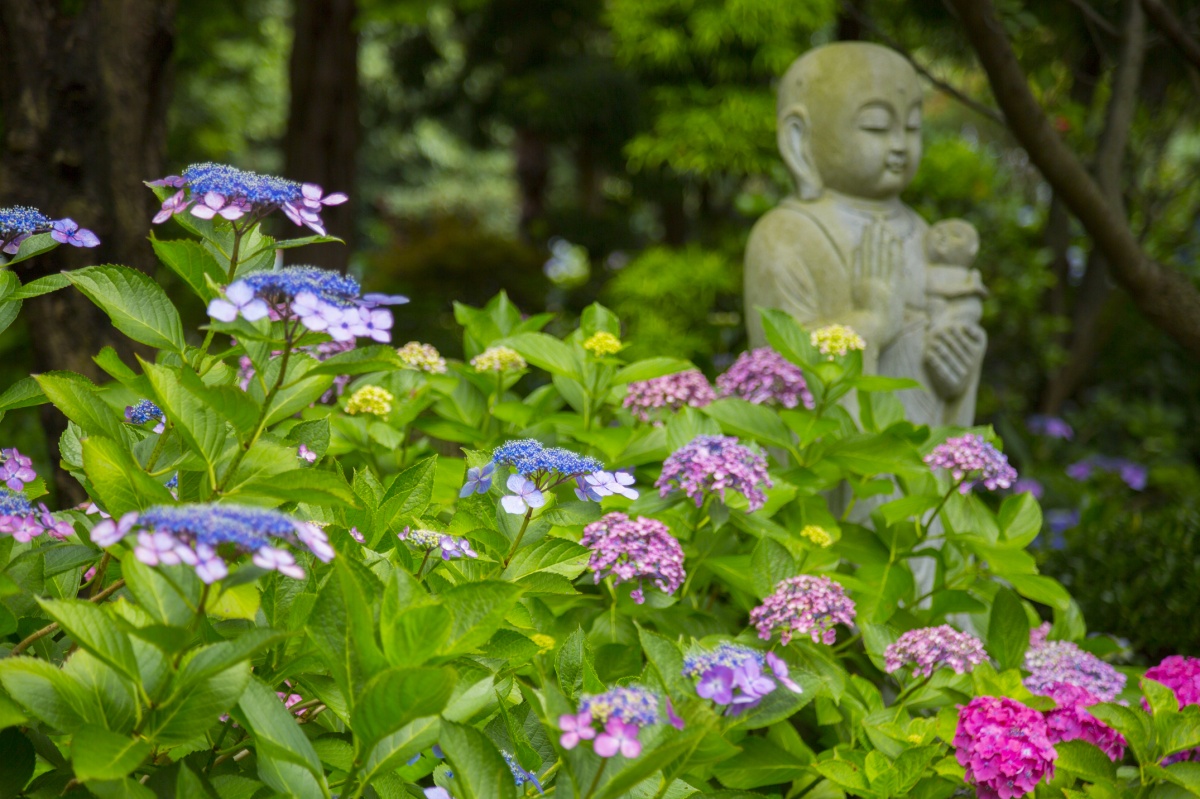
Outside of Japan, Jizo is known as Ksitigarbha (from Sanskrit), and he is a Bodhisattva—a practitioner of Buddhism who has deferred their own enlightenment to help others along the path. As a guardian of travelers, small statues of Jizo can be found alongside roads or at temples. Jizo is also a notable guardian of children, particularly those who have died before their parents. It’s believed that such children cannot cross the Sanzu River (think the River Styx) on their way to the afterlife, and so Jizo hides them in his robes and crosses, to save them from an eternity of piling rocks along the riverbank. Jizo statues are sometimes adorned with small toys, bonnets and bibs, put there by grieving parents as an offering for his protection in their passing. As a guardian of the deceased, Jizo statues are also common in graveyards.
9. Raijin & Fujin
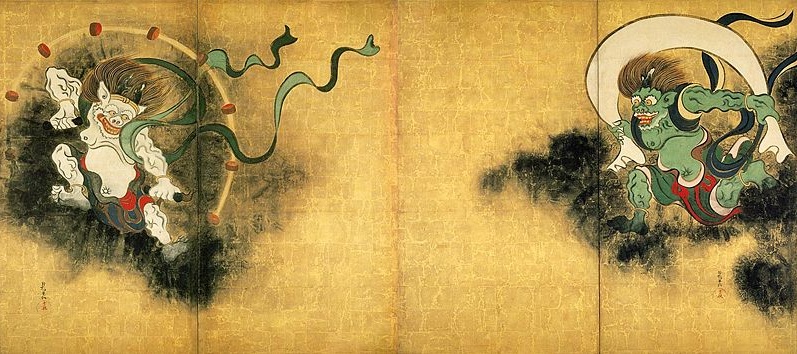
Raijin is a kami of lightning, thunder and storms, and Fujin is the kami of wind. They are often depicted together, with Raijin on the left—typically carrying a hammer, surrounded by drums—and Fujin on the right—holding a bag of wind, hair wildly askew. As gods of weather, Raijin and Fujin were feared as much as venerated, and are thought to be responsible for the kamikaze divine wind that helped ward off the Mongols when they invaded for the second time in 1281. They can often be seen standing guard at the entryways of both Shinto shrines and Buddhist temples throughout Japan.
8. Anyo & Ungyo
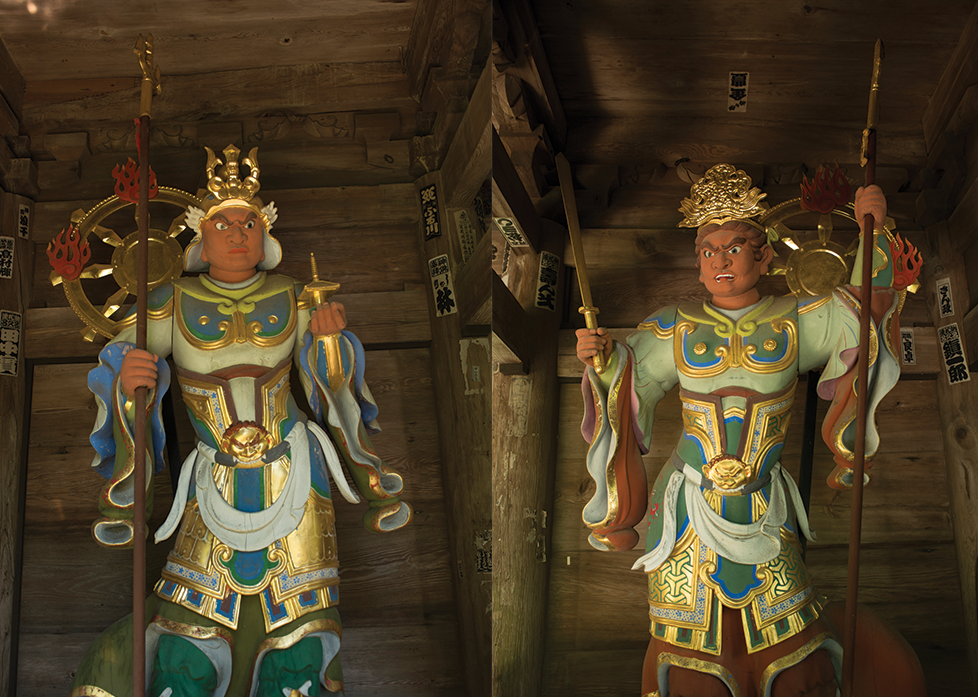
This pair of Buddhist deities are known as Nio, benevolent guardians who stand watch at the entrance of temples, which are often referred to as nio-mon (literally “Nio Gate”).They represent the cycle of birth and death. Agyo is typically depicted bare-handed or wielding a massive club, his mouth open to form the sound “ah,” which represents birth. Ungyo is also often depicted bare-handed, or else holding a large sword. His mouth is closed to form the sound “om,” which represents death. Although they can be found at temples throughout the country, perhaps the most famous depiction of Agyo and Ungyo is at the entrance to Todaiji Temple, in Nara Prefecture.
7. Inari
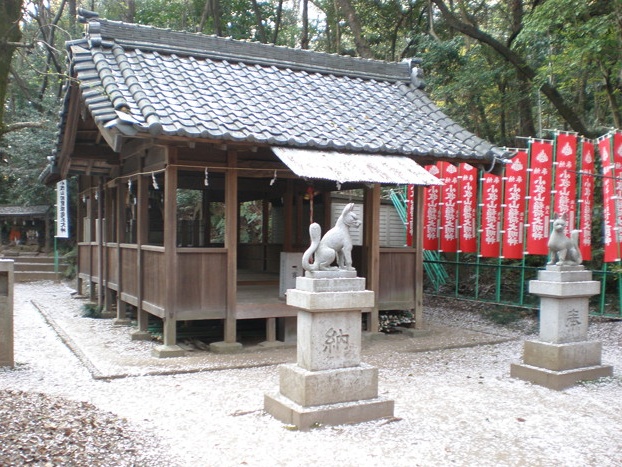
Not to be confused with the foxes he uses as worldly messengers, the kami Inari is a Shinto deity of many important things—rice, sake, tea and prosperity. The kami is sometimes depicted as a bearded man riding a white fox, though Inari has also been depicted as a long-haired woman carrying rice. Shrines to Inari are easily recognized by the abundance of fox statues on the premises, as well as long rows of torii gates—like at Fushimi Inari Taisha in Kyoto!
6. Kannon
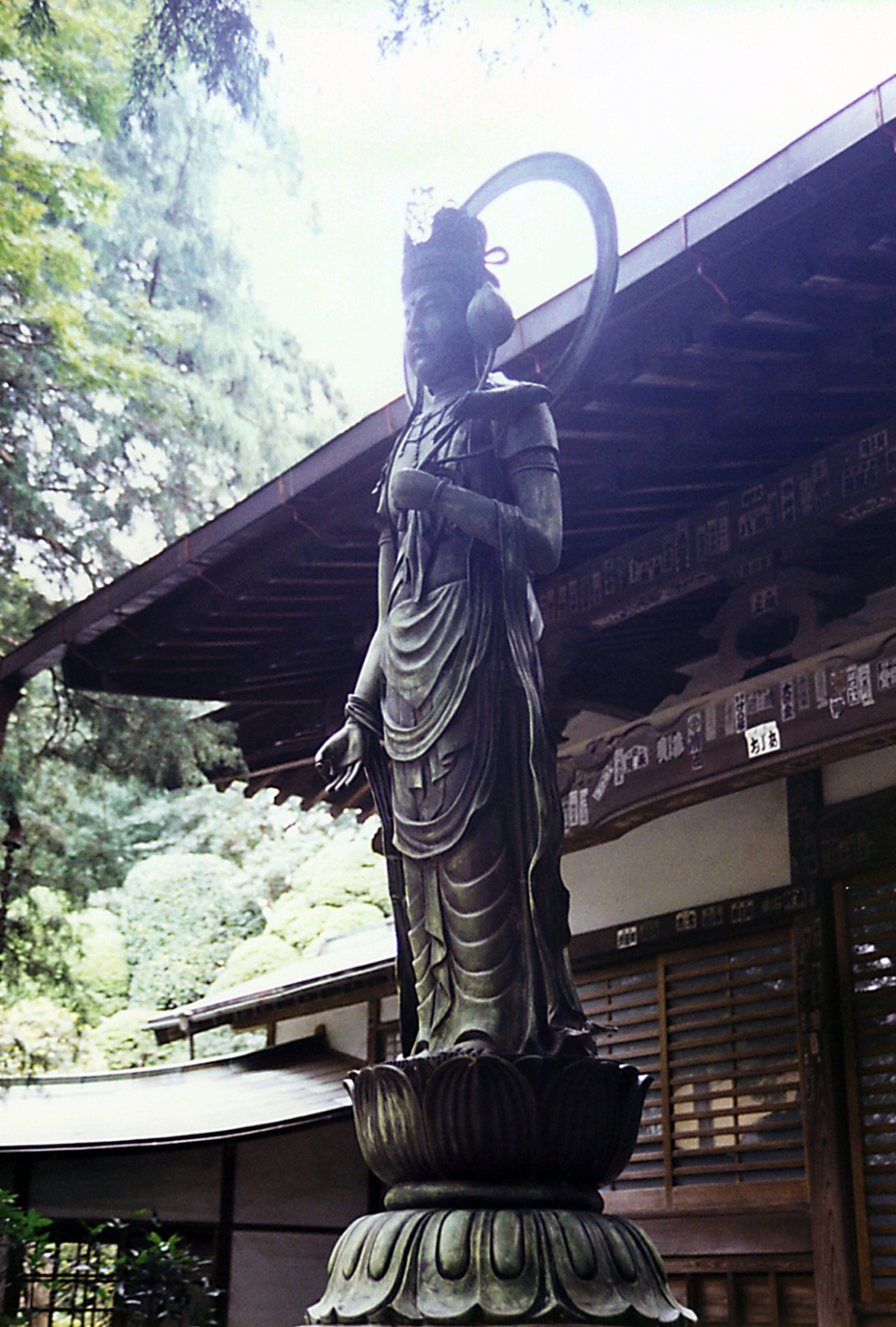
Kannon is another Bodhisattva, one who presides with Amida Buddha in the Pure Land, which is often depicted as a mountainous island paradise. She is the goddess of mercy and compassion, and has several distinct depictions, including that of Senju Kannon—or the 1,000-armed Kannon—as well Juichimen Kannon, who has 11 faces. It is also said that when Christianity was outlawed during the Edo Period (1603 – 1868), some practitioners used the depiction of Kannon holding a child as a substitute for the Virgin Mary and Jesus in order to secretly continue to practice their faith in public. There are many pilgrimages dedicated to Kannon, such as the Saigoku Pilgrimage, which involves practitioners visiting 33 Buddhist temples throughout the Kansai area.
Related Articles
Highway to the Gods: In the Footsteps of Oyama Pilgrims
Takachiho: Climb into the Land of the Gods
5. Benzaiten
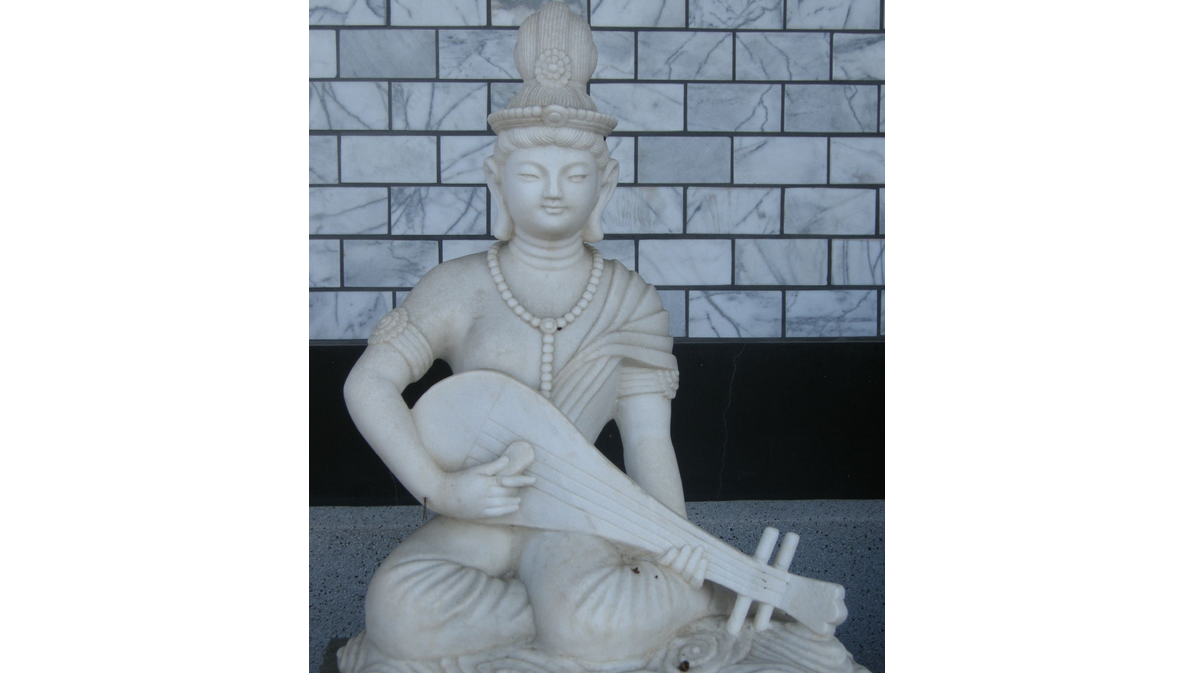
https://ja.wikipedia.org/wiki/%E5%BC%81%E6%89%8D%E5%A4%A9#/media/File:Benzaiten.jpg
Also referred to as Benten, Benzaiten is a Buddhist patron deity of the arts and femininity, and was often venerated by geisha. She is also the only female among Japan’s “Seven Gods of Fortune,” and is worshipped as a goddess of luck. She has a strong association with the sea, and is often depicted riding a large sea dragon, or playing a biwa, a type of Japanese lute. There is a legend that says she tamed a five-headed dragon who plagued coastal fishing communities with her extraordinary beauty, and that the dragon rests at Ryuko-ji (literally “Dragon’s Mouth Temple”) in Enoshima.
4. Izanagi & Izanami
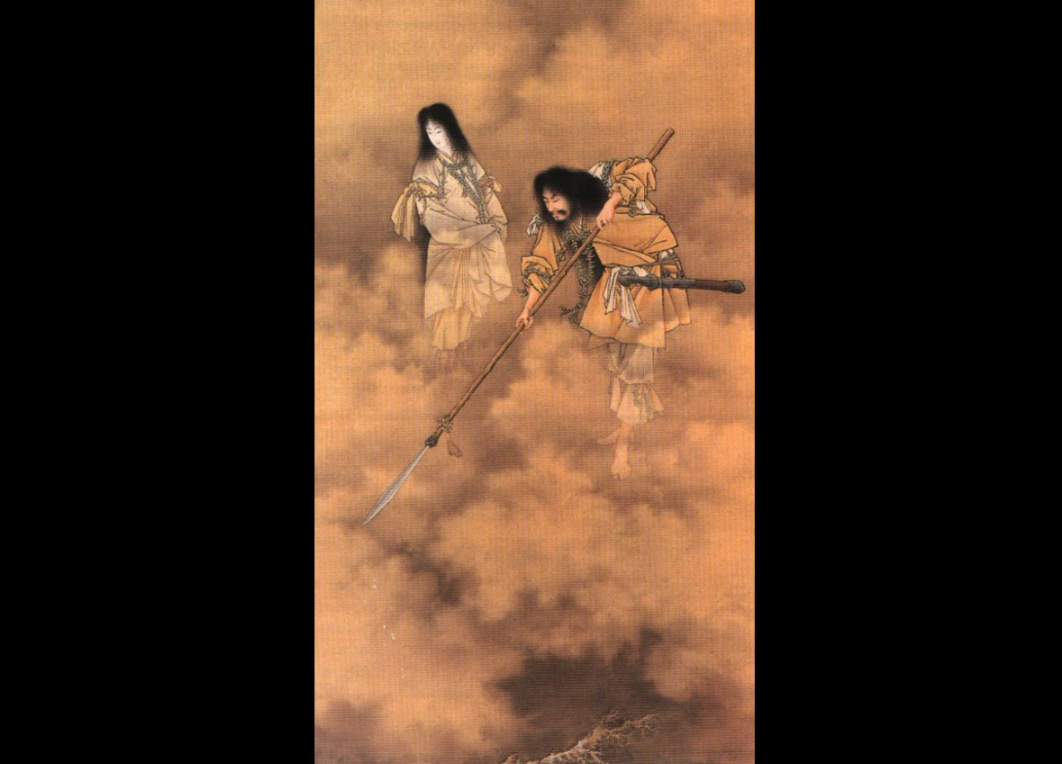
https://ja.wikipedia.org/wiki/%E3%82%A4%E3%82%B6%E3%83%8A%E3%83%9F#/media/File:Kobayashi_Izanami_and_izanagi.jpg
Izanagi no Mikoto and Izanami no Mikoto are the Shinto deities at the center of Japan’s creation myth, and the mother and father of all gods. Unsure of how to create order from chaos, they plunged a jeweled spear into the primeval gulf between heaven and earth. The drops that fell from the tip of the spear created land.
Soon after, they began to give birth to the kami that would inhabit it. Izanami was burned to death when she gave birth to the fire god, Kagutsuchi. Stricken with grief, Izanagi visited the Land of the Dead, Yomi, determined to bring her back. He was horrified to find his wife no more than a decaying, maggot-filled corpse, and he fled in revulsion back to the entrance. He sealed her inside, and she became a goddess of the dead, determined to take 1,000 lives every day to avenge her shame. In turn, Izanagi decided 1,500 people would be born every day.
3. Ebisu

https://ja.wikipedia.org/wiki/%E3%81%88%E3%81%B3%E3%81%99#/media/File:Statue_of_Ebisu_the_God_of_Fishermen_(Kesen-numa,_2005-07-16).jpg
Ebisu, sometimes referred to as Yebisu, is the patron deity of fishermen and tradesmen, and another of Japan’s “Seven Gods of Fortune.” He is often depicted as a plump, happy fisherman who carries a fishing rod in one hand and a red snapper in the other. The snapper also symbolizes fortune, as its name in Japanese, tai, is phonetically similar to the word for an auspicious or celebratory occasion, omedetai. Some legends identify Ebisu’s origin as that of the first god birthed by Izanagi and Izanami, the misconceived Hiruko, who was malformed and cast into the sea. Others say he was the son of the hero deity Okuninushi, the “Great Land Master.”
He is commonly sighted on cans of the beloved Japanese beer, Yebisu.
2. Tengu
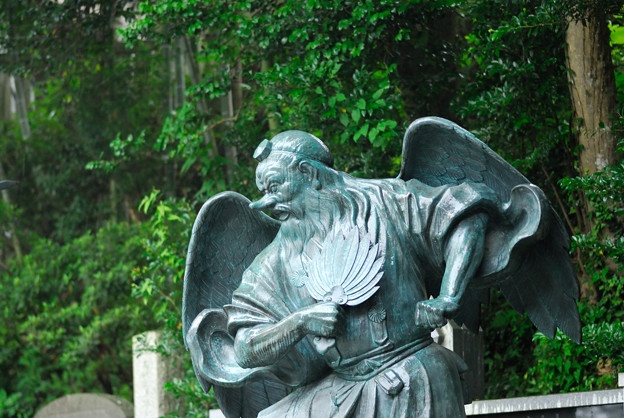
Although Tengu aren’t exactly deities, they’re significant and legendary figures in the Shinto pantheon, and Japan’s yokai folklore tradition. They’re quite bird-like, and are characterized by their long, red noses, their physical strength and magical powers, incredible prowess in martial arts and, of course, their ability to fly.
They were initially considered adversaries of Buddhism, as they would pursue practitioners and attempt to subvert their beliefs to lure them away from enlightenment. Over time their image changed, and they came to be seen as protectors or guardians, though they’ve maintained their reputation as occasional tricksters.
1. Amaterasu
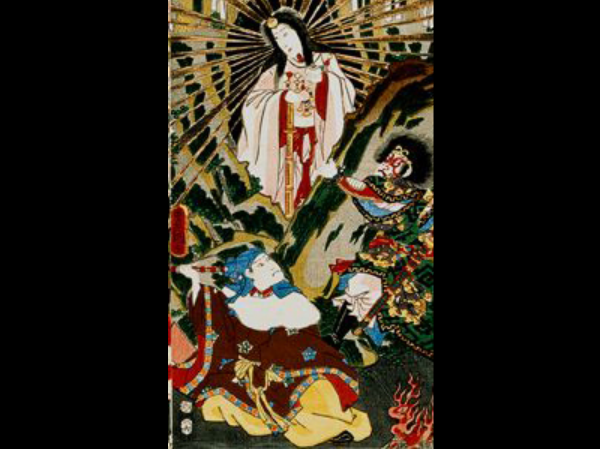
https://ja.wikipedia.org/wiki/%E5%A4%A9%E7%85%A7%E5%A4%A7%E7%A5%9E#/media/File:Amaterasu_cave_crop.jpg
Amaterasu Omikami is the Shinto sun goddess from which the Japanese imperial family claimed descent. It’s said that she was birthed from the left eye of Izanagi when he washed the remnants of the underworld from his face after fleeing from his wife, Izanami.
One popular story about Amaterasu involved a fight with her tempestuous, violent tempered brother Susano-O. After the fight, she fled into a cave, which caused the world to plunge into darkness. To lure her out of the cave, the other gods staged a raucous celebration at the entrance. When her curiosity piqued, Amaterasu went to see how they could entertain themselves with the absence of light. When she exited the cave, the other gods placed a shimenawa (sacred straw rope) in front of the entrance so that she couldn’t return to hiding.
The Ise Grand Shrine in Mie Prefecture is her primary place of worship, and one of the most significant Shinto shrines in all of Japan. One of the Three Sacred Treasures of Japan, the Sacred Mirror, is preserved within.



